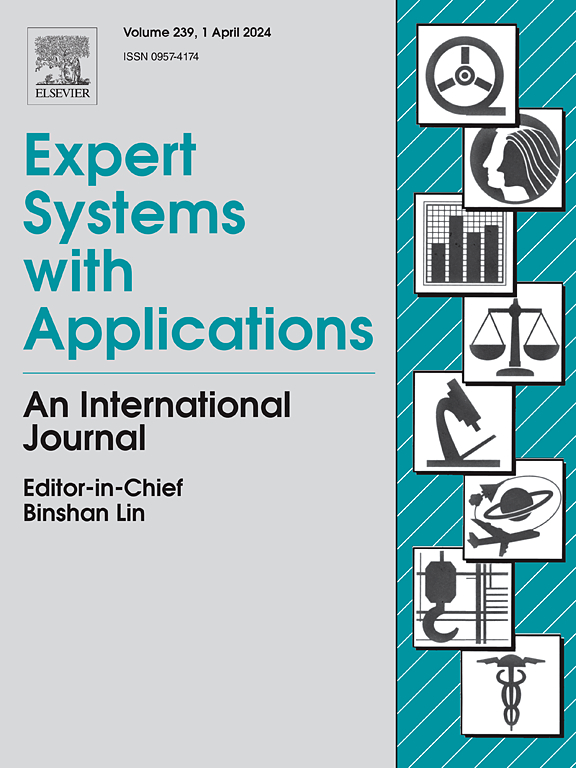MSU-Net:用于中国南方丘陵地区油茶种植区提取的多尺度自关注语义分割方法
IF 7.5
1区 计算机科学
Q1 COMPUTER SCIENCE, ARTIFICIAL INTELLIGENCE
引用次数: 0
摘要
油茶是世界四大食用木本油料之一,因其营养价值极高,被誉为 "东方橄榄油"。中国南方的气候与油茶栽培的理想条件同步,是全球油茶分布最丰富的地区。因此,油茶种植区的划分对于农业部门制定战略性生产计划和管理具有重要意义。然而,该地区经常受到多变天气和频繁云雨的影响,缺乏连续的光学图像数据。此外,该地区地形复杂,以山地为主,农田覆盖面广,植被覆盖率高,地形特征破碎,为从遥感图像中准确提取语义信息带来了挑战。针对这些挑战,我们提出了一种多尺度自注意力语义分割网络,旨在细致识别油茶的语义特征。具体来说,我们引入了自注意机制,使模型能够全面理解特征图像上的信息,然后通过 ASPP(Atrous Spatial Pyramid Pooloing)模块对多尺度特征图像进行整合,以防止忽略次要地形特征。最后,应用 Dice-Loss 函数优化模型对边缘细节的分割。实验评估表明,所提出的多尺度自注意语义分割模型在数据集的油茶提取方面达到了 0.93 的交集大于联合(IOU)、0.98 的像素准确率(PA)和 94.83% 的总体准确率(OA),与原始模型相比有了显著的改进。此外,我们还从数据量和比例的角度探讨了该方法对数据的要求。最终,实验结果表明,我们提出的方法可以高精度地提取中国南方多云多雨丘陵地区的油茶种植区域,从而为农业部门监督油茶种植提供技术手段。本文章由计算机程序翻译,如有差异,请以英文原文为准。
MSU-Net: Multi-Scale self-attention semantic segmentation method for oil-tea camellia planting area extraction in hilly areas of southern China
Oil-tea camellia, one of the world’s four major edible woody oil trees, is acclaimed as the ’Oriental Olive Oil’ due to its exceptionally high nutritional value. The climate in southern China synchronizes with the ideal conditions for cultivating oil tea, making it the most abundant region globally in terms of its distribution. Consequently, the delineation of oil tea cultivation zones holds paramount significance for agricultural authorities in devising strategic production plans and management. However, the region is often affected by changeable weather and frequent cloud and rain, and there is a lack of continuous optical image data. Moreover, the complex topography primarily characterized by mountainous terrain, extensive coverage of farmlands, and vegetation has fragmented topographic features, posing challenges in accurately extracting semantic information from remote sensing images. To address these challenges, we propose a multi-scale self-attention semantic segmentation network aimed at meticulously identifying the semantic features of oil tea. Specifically, we introduce a self-attention mechanism to enable the model to comprehensively understand the information on feature images, followed by the integration of multi-scale feature images through the ASPP(Atrous Spatial Pyramid Pooloing) module to prevent the oversight of minor terrain features. Finally, the Dice-Loss function is applied to optimize the model’s segmentation of edge details. Experimental evaluations demonstrate that the proposed multi-scale self-attention semantic segmentation model achieved an Intersection over Union (IOU) of 0.93, Pixel Accuracy (PA) of 0.98, and Overall Accuracy (OA) of 94.83% for oil tea extraction on the dataset, showcasing a notable improvement over the original model. Additionally, we explore the method’s data requirements from the perspective of data volume and proportion. Ultimately, the experimental results demonstrate that our proposed method can accurately extract the oil tea cultivation areas in the cloudy and rainy hilly regions of southern China with high precision, thereby serving as a technological means for agricultural departments to oversee oil tea cultivation.
求助全文
通过发布文献求助,成功后即可免费获取论文全文。
去求助
来源期刊

Expert Systems with Applications
工程技术-工程:电子与电气
CiteScore
13.80
自引率
10.60%
发文量
2045
审稿时长
8.7 months
期刊介绍:
Expert Systems With Applications is an international journal dedicated to the exchange of information on expert and intelligent systems used globally in industry, government, and universities. The journal emphasizes original papers covering the design, development, testing, implementation, and management of these systems, offering practical guidelines. It spans various sectors such as finance, engineering, marketing, law, project management, information management, medicine, and more. The journal also welcomes papers on multi-agent systems, knowledge management, neural networks, knowledge discovery, data mining, and other related areas, excluding applications to military/defense systems.
 求助内容:
求助内容: 应助结果提醒方式:
应助结果提醒方式:


